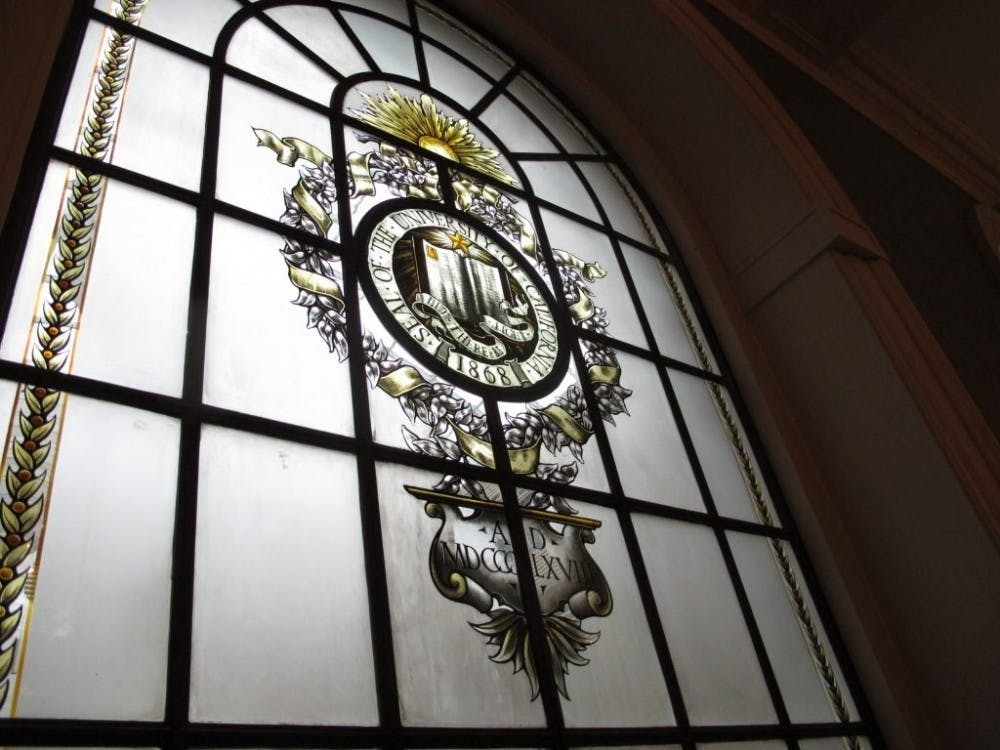The 2018-19 Student Government Association (SGA) referendum, with 2,738 total voters on eight key issues, reached more students than any SGA ballot since 2012, according to AJ Tsang, who served as the group’s executive president last spring. The referendum is intended to expand SGA’s influence over the University’s decisions.
According to Tsang’s report, 42.5 percent of the student body participated in the referendum over the course of the 2018-19 academic year. The referendum asked students to vote “yes” or “no” on eight questions regarding issues pertinent to the undergraduate community.
For example, 2042 students (85.9 percent of participants) called for an undergraduate observer member on the Board of Trustees.
The referendum is meant to offer concrete data on student opinion, Tsang said, in order to validate SGA’s policy objectives to administrators. However, some students questioned whether the referendum would enhance SGA’s ability to effect change on campus.
Senior Aran Chang, previous co-president of the Korean American Student Association, commented that University leaders often make important decisions without consulting students, citing the planned private police force as an example.
“In terms of the administration actually taking the referendum seriously, I’m highly doubtful,” he said. “But my main issue with SGA is that it always felt like the organization was out of touch and never actually engaged directly with the student body, so this is definitely a step in the right direction.”
Vice Provost for Student Affairs Alanna Shanahan acknowledged that the referendum reflects general student opinion but noted that its results might not necessarily come to fruition.
“Where students are making a really great case, I’ll want to help them make that case,” she said. “But at the same time, I don’t want to be in a position where I’m going to help them make a case that I personally, or our office, can’t stand behind.”
She added though that she would make the Board of Trustees aware of the results, as they reveal undergraduates’ viewpoints.
“As far as helping the decision makers understand that that’s student preference, absolutely, because that’s the reality of where the referendum put us,” she said.
SGA Executive Vice President Dean Chien expressed his optimism in an email to The News-Letter.
“I do believe that these numbers tell a compelling story to administration,” he wrote. “We’ve already seen initiatives such as the student center and OIE [Office of Institutional Equity] investigators be addressed just in the past year, so I’m certain we’ll make progress with the others.”
About 83 percent of participants (1974 students) voted for the University to hire three additional OIE investigators; 1970 students (82.8 percent of participants) voted for the University to appoint at least one faculty member in each academic department to promote student mental health; 1917 students (80.6 percent) voted for the University to construct a student center; and 1879 students (79 percent) voted for the Board of Trustees to fully divest from fossil fuels.
At least one third of the student body (about 1871 students) had to vote “yes” on a given question for SGA to be bound to that outcome in legislation. For example, SGA is not bound to push the University to restore first-semester covered grades for freshmen or to create a private police force, for which 1576 students (66.3 percent of participants) and 688 students (28.9 percent) voted, respectively. In addition only 1859 students (78.2 percent of participants) voted to give the SGA the authority to amend its constitution by a two-thirds majority in the Senate.
Tsang explained in the report that after SGA collected the 900 signatures required to hold the referendum during the summer of 2018, SGA’s Internal Affairs Committee identified which issues to include based on public feedback.
Because of high turnout and because each question described the possible implications of a “yes” or “no” vote, Tsang reasoned that the referendum applies to the whole student body.
“The results can be considered to have passed the most stringent thresholds for democratic legitimacy set by the SGA Constitution,” he wrote in an email to The News-Letter.
Tsang stated that SGA members used a combination of in-person and social media promotion to ensure high turnout, along with giving out Chipotle gift cards in May, shortly before the referendum closed.
Current SGA Executive President Aspen Williams shared her plans for the organization’s future actions.
“We can use this evidence to say, ‘Your student body at Johns Hopkins wants to see x, y and z, and as the administration of the student body, it’s your job to represent those interests, and we’ve given you a way to understand what those interests are,’” she said. “The referendum gives us a good roadmap of what we want to pursue.”
Chien stated that SGA will soon determine specific timelines for goals this year and that SGA also has long-term plans for the JHU Community Council (JCC). SGA first introduced the idea for the JCC in October 2018, which emerged after discussions with administrators.
Williams argued that SGA’s power comes from fostering alliances with University leadership.
Junior Amritpal Singh, former treasurer of College Democrats, believes the referendum has the potential to affect those relationships.
“I believe that with more data, admin has more reason to take student and SGA opinions seriously,” he said.
Junior Sam Mollin, communications manager for Refuel Our Future, a student environmental activist group, thinks that the referendum demonstrates the need for SGA to advocate alongside student groups for the University to fully divest from fossil fuels.
Mollin, who was one of SGA’s sophomore class senators last year, also stressed the need for the Board of Trustees to be more transparent.
“The efforts of administrators to connect students with the Board of Trustees... have fallen short of what is needed to incorporate real student input,” Mollin said. “The undergraduate observer represents a proven way to start moving in the right direction, which many of our peer universities have already done.”





